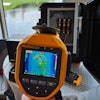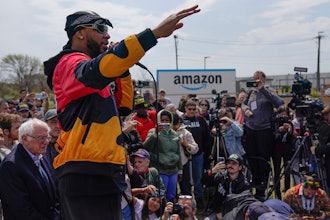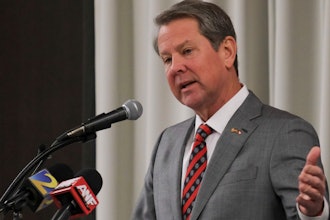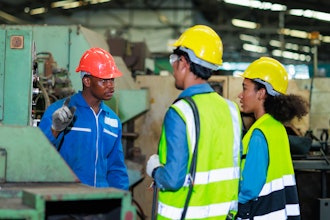We all know about the cost savings generated when we eliminate waste from manufacturing processes. How many of us consider the savings available when we address another source of waste: the waste that occurs in our workplace interactions?
This scale of this waste is substantial — and often invisible. Miscommunication results in errors and rework. People move mountains in response to a leader’s “directive” only to find that the leader meant it as an offhand comment. When people are afraid to speak up, they fail to make problems visible, allowing those problems to drag down performance and create a fire-fighting environment rather than an environment in which root causes are addressed. Meetings include the wrong people for the work at hand. Or a meeting is missing critical people, and precious time is lost in updating them during the next meeting. Decisions drag on when people are unwilling to address the “real” issue in the room, or when they agree just to agree and then fail to execute that agreement.
In our work at manufacturing sites around the world, we have seen many situations where interactions create waste:
- A high-volume plant could not make further productivity gains because of a longtime obstacle that no one felt safe enough to raise.
- When a new person joined the plant leadership team, her colleagues kept her at arm’s length. She often heard comments like, “You don’t understand,” or, “That’s not the way we do things around here.” Their critical stance eventually dissuaded her from speaking up.
- Several senior leaders were visiting one of their company’s production sites. As part of making conversation with the local plant manager, one of the leaders remarked, “I wonder how many valves there are at this site.” A team then stayed up all night to count the valves.
- A product development team held a meeting to discuss a key opportunity, despite the absence of one subject matter expert. As it turned out, the expert had information that impacted the opportunity substantially — requiring an additional meeting to cover the same ground, and a rework of the decisions made in the first meeting.
Addressing this waste requires a focus on creating Right First Time interactions: eliminating waste in interactions just as manufacturers eliminate waste in systems and processes. Over time, we have discovered a framework for eliminating this waste. It includes a fundamental shift in our stance toward other people—from judging to joining—and 4 Keys to make the shift concrete.
Judging vs. Joining
Most of us have learned to approach new interactions and unfamiliar people from a standpoint of judging. We size people up, compare them with others and ourselves, see them as competitors, find fault and engage with them cautiously, if at all. This behavior often places distance between ourselves and others, blocks collaboration, makes it difficult to solve problems quickly and thwarts progress toward the organization’s goals.
Consider the plant leadership team in the second example above. Because they took a judging stance toward their new colleague, team members did not get the benefit of her ideas, energy and experience, resulting in missed vital opportunities for continuous improvement.
Instead of judging, we can choose to start each interaction by joining. In joining mode, we approach others from a stance of openness and support rather than caution and defensiveness. We begin with the assumption that we are going to connect — that each of us has something to offer the other.
What if the plant leaders had opted to join the new person? They would have projected an excitement to hear and leverage her perspectives. In response, she would have eagerly shared ideas from her experience — ideas that team members may not have considered. The team might have performed at a new level, achieving breakthroughs they could not have achieved before.
4 Keys to Eliminating Waste in Interactions
One critical element to eliminating waste in interactions is having a common language for those interactions. Just as Lean has created a language for business, the 4 Keys provide a language for interactions. The 4 Keys are as follows:
1. Lean into discomfort.
Many people find it uncomfortable to speak up, and yet one of the cornerstones to making problems visible or having an effective Kaizen is to ensure that people are speaking up and raising critical issues. The ability to lean into discomfort thus becomes foundational to eliminating waste in our interactions. Using the language of, “I am going to lean into discomfort,” creates safety and alerts team members that what we are about to share is not easy. It provides a signal to others to join us and have the right conversation at the right time to solve problems. The more people lean in, the faster issues can be raised and then addressed. Often, this prevents small problems from growing into big problems or crises.
The power of leaning into discomfort is that it enables trust to grow quickly. By making the conscious choice to lean in, we enable ourselves to share information within and across departments, functions, and organizational units. By trusting others, we invite others to trust us. As a result, people in organizations come together and collaborate faster.
In the high-volume plant mentioned above, a new team member used the phrase, “I need to lean into discomfort,” to raise the difficult issue. His honesty and courage inspired the other team members to speak up; the ensuing discussion made a significant problem visible and led to more rapid problem solving.
2. Listen as an ally.
In listening as an ally, rather than trying to find flaws in what others are saying, we listen as partners: looking beneath our assumptions, linking to one another’s ideas, resolving conflicts, adopting a learning posture and seeking out points of connection. We can also challenge as allies, offering alternatives in the spirit of adding value from another perspective. When I listen as an ally, I start from the assumption of positive intent — that we are working for shared success — in the spirit of joining and partnership.
How does this relate to waste? By listening as an ally, I am looking for ways to connect to and support what the other person is saying, rather than listening just enough to formulate rebuttals. By challenging as an ally, I share my perspective instead of simply “putting in my two cents” or “playing devil’s advocate.” In both cases, I seek to move the conversation forward, avoiding the waste of asserting and reasserting my position without making progress toward the objective.
3. State your intent and intensity.
None of us can tell exactly how others are interpreting our words and ideas, and this often leads to substantial waste. People can misinterpret leaders’ intent (what they mean) and intensity (how committed they are to their ideas) and act in ways the leaders never intended — wasting financial resources, necessitating rework, or both. Imagine how much overtime was expended in counting all the valves in our example above.
Disclosing intent and intensity enables others to avoid this kind of waste. They know how much to invest in a discussion, when to contribute ideas, and when to move to action. The use of a common language to clarify intent and intensity (like the following) greatly reduces misinterpretations and missteps:
- Notion: a casual “in the shower” idea. You have low investment in the idea and invite others to discuss if interested.
- Stake: you have some investment in the idea but are willing to move your position as you are influenced and learn from others.
- Boulder: you have a strong investment in the idea and are firmly entrenched. There is little room for negotiation, and changing your mind can only happen with a lot of effort by others.
- Tombstone: you have total investment in the issue. It is a “must do” with no room for discussion.
4. Share your street corner.
In the past, many organizations asked a select group of “go to” people to solve problems and anticipate opportunities. The world has become too complex for that, as our product development example above makes clear. Instead, we must hear from all relevant perspectives, or street corners (as in “the view from my street corner”), to gain a 360-degree view of any situation. The greatest success is possible when we hear and understand everyone with a relevant street corner on the issue. As we do this — asking who else needs to be included, sharing our street corners, hearing those of others — we eliminate the waste that occurs when an important perspective is missed, necessitating additional meetings and rework.
Manufacturers cannot afford to ignore waste of any kind, no matter where it occurs in their operations. The use of these 4 Keys has enabled many organizations worldwide to uncover and address one of the most hidden sources of waste.
About the Authors
Thought leaders in organization development for more than 40 years, Judith H. Katz and Frederick A. Miller are the co-authors of three books, most recently Opening Doors to Teamwork and Collaboration: 4 Keys that Change EVERYTHING (2013). They have created numerous breakthrough concepts in their field, including Inclusion as the HOW® as a foundational mindset for higher operational performance and accelerated results. As Executive Vice President and CEO (respectively) for The Kaleel Jamison Consulting Group, Inc.—one of Consulting magazine’s Seven Small Jewels in 2010—they have partnered with global organizations to elevate the quality of interactions, leverage people’s differences, and transform workplaces.























